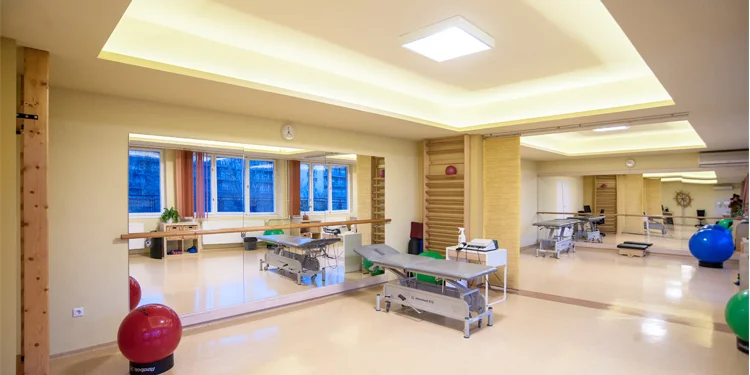Why Go to Our Physiotherapists?
Physiotherapy is an integral part of the complex treatment of the spine requiring the conjoint efforts of the doctor and the physiotherapist working as a team towards the rapid recovery and rehabilitation of their patients.
The Physiotherapy Department, with over ten years' experience in spine care, provides specialized individual and group physiotherapy sessions to our in- and outpatients as part of their conservative and perioperative spine treatments and other musculoskeletal problems, (e.g., hip and knee joints).
Ten physiotherapists and two therapeutic masseurs work diligently in providing the high level of care (English, German and Spanish is also spoken) to restore the spine's functional capacity, increase the range of movement as much as possible given the new capabilities, and reestablish the strength and endurance of the stabilizing musculature.
We have developed a special training program that, if followed regularly as taught, will result in such improvement as to enable the patients to perform symptom free their daily activities (i.e., work, sports, leisure activities) in the long term.
Some of our physiotherapists are trained and offer private lessons in such fitness and sports training programs as Pilates, Nordic Walking, etc. that could preclude overstraining the spine and joints.
The physiotherapy treatments are begun only following condition evaluation on the basis of which a diagnosis is reached and a treatment plan is set up.

